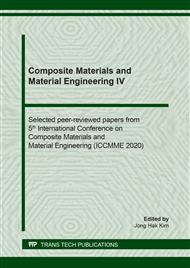p.40
p.46
p.55
p.61
p.69
p.75
p.81
p.87
p.95
Compressive Strength Prediction of Quad-Diametral Lattice Structures
Abstract:
Additive manufacturing is rapidly developing technology in all areas of industry. It is reducing the delivering time of each prototype from the manufacturer to the final user. This paper deals with mechanical properties of lattice structures. They are produced by additive technologies from the plastic material. Lattice structures are special space-filling unit cells, which can fill gaps in parts. They have good ratio between overall weight and strength. Nowadays are these structures commonly used, but their mechanical properties are not well described. This makes the design process difficult. Mechanical compressive test and virtual evaluation by the finite element method was performed. It was done for three different Quad-Diametral structures (Quad-Diametral, Quad-Diametral-Line and Quad-Diametral-Cross). Results from both testing approaches (real measurement and finite element method) are deeply described in this paper. It was shown, that the Quad-Diametral-Cross lattice cell has higher mechanical properties comparing to others. Increasing of the stiffness was 121% only with weight higher by 43%. The plastic material Ultimaker PLA (polyactic acid) was used as reference material in this research.
Info:
Periodical:
Pages:
69-74
Citation:
Online since:
June 2020
Authors:
Keywords:
Price:
Сopyright:
© 2020 Trans Tech Publications Ltd. All Rights Reserved
Share:
Citation:


